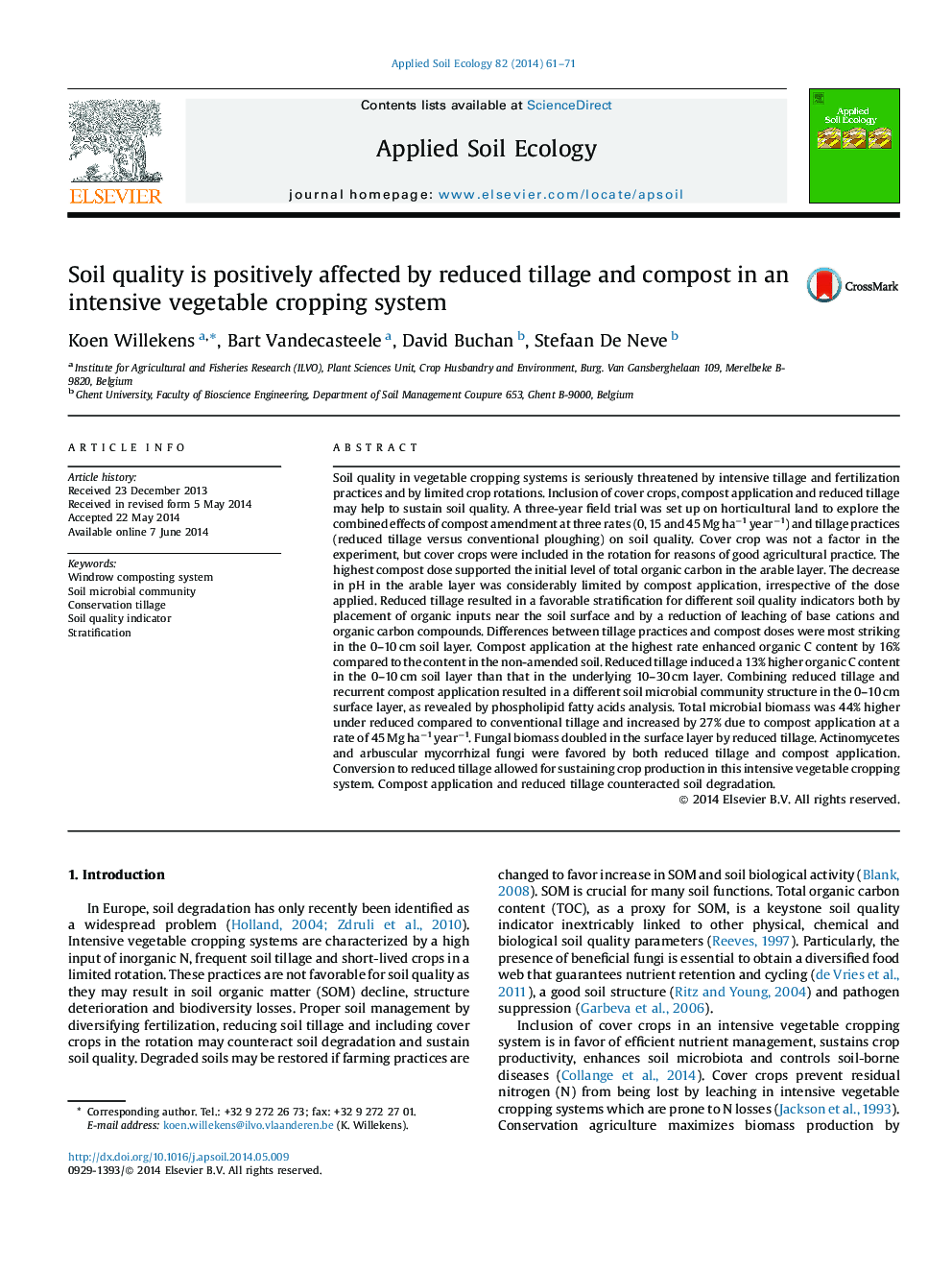| کد مقاله | کد نشریه | سال انتشار | مقاله انگلیسی | نسخه تمام متن |
|---|---|---|---|---|
| 4382151 | 1617801 | 2014 | 11 صفحه PDF | دانلود رایگان |
• Reduced tillage and compost application counteracted soil degradation.
• Compost application positively affected the pH, irrespective of dose.
• Non-inversion tillage reduced leaching of base cations and organic carbon compounds.
• Soil management affected the microbial community structure in the topsoil.
• Cover crops were included in the rotation for reasons of good agricultural practice.
Soil quality in vegetable cropping systems is seriously threatened by intensive tillage and fertilization practices and by limited crop rotations. Inclusion of cover crops, compost application and reduced tillage may help to sustain soil quality. A three-year field trial was set up on horticultural land to explore the combined effects of compost amendment at three rates (0, 15 and 45 Mg ha−1 year−1) and tillage practices (reduced tillage versus conventional ploughing) on soil quality. Cover crop was not a factor in the experiment, but cover crops were included in the rotation for reasons of good agricultural practice. The highest compost dose supported the initial level of total organic carbon in the arable layer. The decrease in pH in the arable layer was considerably limited by compost application, irrespective of the dose applied. Reduced tillage resulted in a favorable stratification for different soil quality indicators both by placement of organic inputs near the soil surface and by a reduction of leaching of base cations and organic carbon compounds. Differences between tillage practices and compost doses were most striking in the 0–10 cm soil layer. Compost application at the highest rate enhanced organic C content by 16% compared to the content in the non-amended soil. Reduced tillage induced a 13% higher organic C content in the 0–10 cm soil layer than that in the underlying 10–30 cm layer. Combining reduced tillage and recurrent compost application resulted in a different soil microbial community structure in the 0–10 cm surface layer, as revealed by phospholipid fatty acids analysis. Total microbial biomass was 44% higher under reduced compared to conventional tillage and increased by 27% due to compost application at a rate of 45 Mg ha−1 year−1. Fungal biomass doubled in the surface layer by reduced tillage. Actinomycetes and arbuscular mycorrhizal fungi were favored by both reduced tillage and compost application. Conversion to reduced tillage allowed for sustaining crop production in this intensive vegetable cropping system. Compost application and reduced tillage counteracted soil degradation.
Journal: Applied Soil Ecology - Volume 82, October 2014, Pages 61–71
